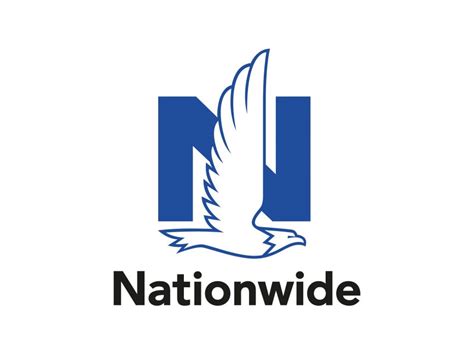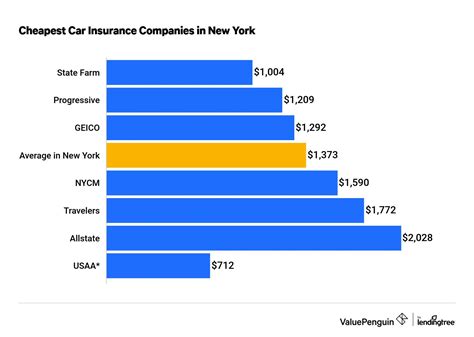Mutual Insurers

The world of insurance is a vast and complex landscape, with various types of insurers offering different policies to cater to the diverse needs of individuals and businesses. Among these insurers, mutual insurance companies stand out as unique entities, providing coverage and financial protection while prioritizing the interests of their policyholders. This article aims to delve into the realm of mutual insurers, exploring their definition, history, key characteristics, and the benefits they bring to the insurance landscape.
The Essence of Mutual Insurers

Mutual insurers, also known as mutual insurance companies or mutual assurance societies, are financial entities that operate on a unique principle: they are owned by their policyholders. Unlike traditional stock companies, where shareholders own the company and aim for profit, mutual insurers are formed with the primary goal of providing insurance coverage to their members. This ownership structure ensures that the focus remains on the policyholders’ interests, fostering a sense of community and trust within the insurance industry.
The concept of mutual insurance has deep historical roots, dating back to the 17th century when groups of individuals came together to pool their resources and provide financial protection against common risks. These early mutual societies were founded on the principles of mutuality, solidarity, and shared responsibility. Over time, mutual insurers evolved and expanded their reach, becoming integral players in the global insurance market.
Key Characteristics of Mutual Insurers

Ownership Structure
The ownership structure of mutual insurers sets them apart from other types of insurance companies. Policyholders, also known as members, collectively own the mutual insurer. This means that any profits generated by the insurer are distributed back to the members in the form of dividends or used to enhance the overall financial strength of the company.
In a mutual insurer, members have a say in the governance and direction of the company. They can participate in annual meetings, elect board members, and have a voice in shaping the insurer's policies and strategies. This democratic ownership model ensures that the insurer remains responsive to the needs and preferences of its members.
Long-Term Focus
Mutual insurers operate with a long-term perspective, prioritizing stability and sustainability over short-term gains. This focus on longevity allows them to make strategic decisions that benefit their members in the long run. Unlike stock companies that may prioritize shareholder returns, mutual insurers can invest in initiatives that strengthen their financial position and provide enhanced coverage to their policyholders.
The long-term orientation of mutual insurers often leads to a more conservative investment strategy. They prioritize capital preservation and stable growth, ensuring that they can meet their policy obligations even during economic downturns. This conservative approach has contributed to the financial resilience of many mutual insurers over the years.
Customer-Centric Approach
The customer-centric nature of mutual insurers is a key advantage they offer. Since policyholders are also owners, the insurer’s success is directly tied to the satisfaction and well-being of its members. This creates a strong incentive for mutual insurers to provide exceptional customer service, develop innovative products, and offer competitive pricing.
Mutual insurers often have a deep understanding of their members' needs and can tailor their policies accordingly. They may offer specialized coverage for specific industries or unique circumstances, ensuring that policyholders receive the protection they require. Additionally, the lack of external shareholders means that mutual insurers can make decisions based solely on the best interests of their members, without the pressure to meet shareholder expectations.
Financial Strength and Stability
Mutual insurers have a proven track record of financial strength and stability. Their ownership structure and long-term focus contribute to their ability to withstand economic fluctuations and market volatility. This stability is crucial for policyholders, as it ensures that their insurance coverage remains secure and reliable, even in challenging times.
Many mutual insurers have strong capital reserves, allowing them to weather financial storms and continue providing coverage without disruption. This financial strength is often recognized by rating agencies, which assign high ratings to mutual insurers, reflecting their solid financial foundation and ability to meet their obligations.
| Mutual Insurer | Rating Agency | Rating |
|---|---|---|
| Example Mutual 1 | Standard & Poor's | AA- |
| Example Mutual 2 | AM Best | A++ (Superior) |
| Example Mutual 3 | Moody's | A1 |

Benefits of Mutual Insurers
Policyholder Dividends
One of the most significant advantages of mutual insurers is the potential for policyholders to receive dividends. When a mutual insurer generates profits, these earnings are distributed back to the members, either as direct cash payments or as credits against future premiums. These dividends serve as a financial reward for policyholders, effectively reducing their overall insurance costs.
The distribution of dividends is based on the mutual insurer's financial performance and the level of participation of each policyholder. Members who have been with the insurer for longer periods or who have a higher level of insurance coverage may receive larger dividends. This incentive structure encourages loyalty and long-term membership, as policyholders can benefit from their continued relationship with the insurer.
Stability and Trust
The stability and trust associated with mutual insurers are highly valued by policyholders. Knowing that their insurer is focused on long-term sustainability and has a strong financial foundation provides peace of mind. Policyholders can rely on their mutual insurer to be there when they need it most, whether it’s for claims settlement or ongoing coverage.
The democratic ownership structure also fosters a sense of trust and transparency. Policyholders have a direct say in the insurer's governance, ensuring that their interests are represented. This level of involvement and accountability contributes to a positive perception of mutual insurers, making them an attractive choice for individuals and businesses seeking reliable insurance coverage.
Innovation and Personalization
Mutual insurers have the flexibility to innovate and personalize their insurance offerings. Since they are not driven by external shareholder demands, they can focus on developing products that meet the unique needs of their members. This agility allows mutual insurers to stay ahead of the curve, offering cutting-edge coverage options and adapting to changing market dynamics.
Personalization is a key strength of mutual insurers. They can work closely with policyholders to understand their specific risks and tailor coverage accordingly. This level of customization ensures that policyholders receive the right level of protection, avoiding unnecessary expenses and ensuring that their insurance needs are met comprehensively.
Conclusion
Mutual insurers represent a unique and valuable segment of the insurance industry. Their ownership structure, long-term focus, and customer-centric approach set them apart, offering policyholders a range of benefits, including dividends, stability, and personalized coverage. As the insurance landscape continues to evolve, mutual insurers remain a trusted and reliable choice for individuals and businesses seeking comprehensive financial protection.
The historical roots of mutual insurance, combined with their modern-day innovations, showcase the resilience and adaptability of this business model. As policyholders, understanding the advantages of mutual insurers can empower individuals to make informed decisions when choosing an insurance provider. With their focus on member interests and financial strength, mutual insurers continue to play a vital role in the insurance market, offering a compelling alternative to traditional stock companies.
What is the difference between a mutual insurer and a stock insurance company?
+The key difference lies in ownership and profit distribution. Mutual insurers are owned by their policyholders, who collectively have a say in governance and receive dividends. Stock companies, on the other hand, are owned by shareholders who seek profits. This distinction impacts decision-making and the focus of each type of insurer.
How do mutual insurers ensure financial stability?
+Mutual insurers prioritize long-term financial strength and stability. They maintain strong capital reserves, invest conservatively, and focus on sustainability. This approach, combined with their ownership structure, allows them to weather economic downturns and provide reliable coverage.
What are the advantages of choosing a mutual insurer for personal insurance needs?
+Mutual insurers offer advantages such as potential dividends, a customer-centric approach, and tailored coverage. Policyholders have a say in governance, ensuring their interests are prioritized. Additionally, mutual insurers’ financial stability provides peace of mind for long-term insurance needs.



